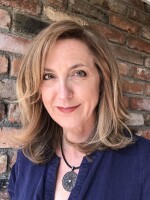There’s nothing quite like the Olympics for bringing the world together—at least in the world of sports. It’s been almost six decades since the Games came to Tahoe, and historian Alicia Barber describes how Reno embraced the moment in this episode of Time & Place.
Squaw Valley beat out a number of other locations to host the 1960 Winter Olympics. One of them was Reno, which had sent in a last-minute bid to the Olympic committee in late 1954, but lost out to the little resort 45 miles up the mountain.

The loss actually turned into a pretty big win. As the closest city to Squaw Valley and the home of a newly expanded airport, Reno became a sort of headquarters for transportation and, of course, entertainment. Its casinos rolled out the red carpet, and the Riverside Hotel even renamed their showroom the “Olympic Room” for the entire year. The Mapes Hotel sponsored a large club for the press, and shuttle buses ran between downtown Reno and the Olympic site several times a day.
Jim Wilbur worked at Harolds Club at the time, and in a 1999 interview, he recalled what that casino did to help all the foreign visitors feel at home.
"They knew that people were going to come down to Reno, and into Harolds Club, that would only speak one language," Wilbur explained. "They had one man in charge, Wolfram Chanin. He was a professor of cello, and he was Polish, I believe. So they made him in charge of surveying all the people in the club, because at that time, he spoke twelve languages. So he was trying to find out if there was any employees—and there were quite a few—that spoke more than just the English."
It turned out to be a pretty international crowd.
"There was one fellow, in particular. He was a big man. He was a professional boxer, and he fought in Reno. And he was from the Argentine," Wilbur recalled. "His name was Eduardo. So they went to him, and they asked him if he spoke any foreign languages, and he says, 'Yes, si.' He says, 'I speak Spanish, Portuguese, and a little bit of English.'"
The survey was a huge success. For the duration of the Games, Harolds Club ran ads encouraging everyone “Tell your foreign friends that more than 50 of our employees are standing by to serve as interpreters.” They all wore badges indicating what country they were from and what languages they could speak, a perfect way to welcome the world to its Biggest Little City.
Historian Alicia Barber is the editor of the website and smart phone app Reno Historical. Oral history clips for this segment were provided by the Special Collections Department of the University of Nevada, Reno Libraries. You can read more about Harolds Club in the book A Family Affair: Harolds Club and the Smiths Remembered, published by the University of Nevada Oral History Program. It's available for free online.





